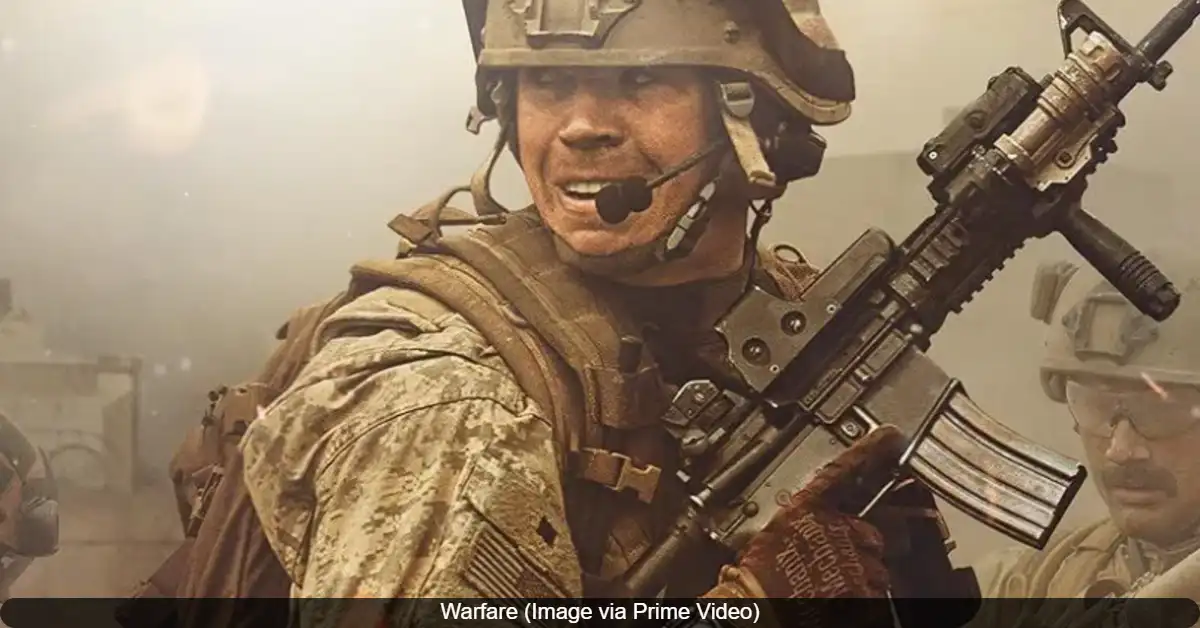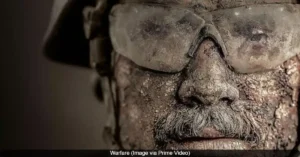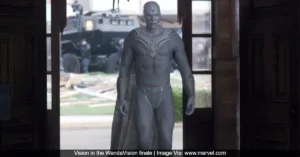Warfare, the intense new war drama from A24, is indeed based on a true story. The film is a meticulous recreation of a real-life U.S. Navy SEAL mission that went wrong in Ramadi, Iraq, in November 2006. Co-directed by acclaimed filmmaker Alex Garland (Ex Machina, Civil War) and former Navy SEAL Ray Mendoza, the project originated from Mendoza’s personal experience and his desire to honor a wounded comrade who lost his memory of the event. Unlike many war films that take creative liberties, Warfare is built entirely from the memories of the soldiers who were there, making it one of the most authentic depictions of modern combat ever filmed.
The True Story Behind the Film
The film is based on a surveillance mission in an al-Qaeda-controlled area of Ramadi on November 19, 2006. Mendoza’s SEAL team was tasked with occupying a two-story Iraqi home to provide overwatch for a larger Marine operation the following day. The goal was to ensure ground troops could pass through safely. However, the team unknowingly positioned themselves next to insurgents. The situation turned critical when al-Qaeda forces hurled a grenade through a sniper hole, severely injuring one of the SEALs, Elliott Miller. During the frantic evacuation, an improvised explosive device (IED) detonated, causing life-threatening injuries to Miller and others.
Miller survived but suffered traumatic brain injuries that erased his memory of the entire mission. Mendoza shared that in the years following, Miller would repeatedly email his former teammates, asking them to help reconstruct what happened. This compelled Mendoza to create Warfare as a way to, in his words, “give his friend’s memories back to him.” The film is dedicated to Miller.
Ray Mendoza explained: “I did it for Elliott because Elliott doesn’t remember what happened that day. I wanted to make something veterans could use as a stepping off point, maybe for conversations that they wouldn’t otherwise be able to have.”
A Forensic Reconstruction of Memory
The filmmakers took an unusually rigorous approach to authenticity. Garland and Mendoza conducted extensive interviews with every surviving member of the SEAL team to cross-reference memories and build a forensic, minute-by-minute timeline of the event. The rule was simple: if something wasn’t verified by at least one firsthand account, it wasn’t included in the film.
This commitment to accuracy extends to every element of the movie:
- Dialogue is almost entirely in authentic military jargon, left untranslated for civilians.
- Sound design is devoid of a traditional score, relying instead on the brutal sounds of battle and wounded soldiers.
- Pacing mirrors the real-life rhythms of war, with long periods of tense downtime suddenly shattered by violent, chaotic action.
The only exception to the grim realism is the film’s opening scene, which shows the young SEALs dancing to the 2004 Eric Prydz music video for “Call on Me.” This was a verified ritual the real team performed before missions as a way to boost morale and relieve stress.
The Cast’s Immersive Transformation
To prepare for their roles, the ensemble cast of young Hollywood stars—including Charles Melton, Will Poulter, Joseph Quinn, Kit Connor, and D’Pharaoh Woon-A-Tai (who plays Mendoza)—underwent a grueling three-week bootcamp. They were trained by Mendoza in weapons handling, radio communications, tactical maneuvering, and military first aid. The actors also carried 50 pounds of tactical gear during shoots and practiced carrying each other on stretchers for miles.
The intense training bonded the cast deeply. They became so close that they gave each other military-style nicknames and even got matching “call on me” tattoos after filming wrapped.
Will Poulter noted: “The bootcamp did two things for us: it gave us a condensed technical skill set in order to play a Navy SEAL, and it also bonded us all in an amazing way. So the emotional side of things naturally took care of itself.”
More Than a War Movie: A Conversation Starter
Warfare deliberately avoids political commentary or Hollywood heroics. Its goal is not to justify or condemn the war but to present a visceral, firsthand experience of it. The directors have stated the film is made primarily for veterans, hoping it will give them a tool to help process their own experiences and start conversations with loved ones.
One of the real Navy SEALs injured in the Ramadi operation, Joe Hildebrand, said that working on the film was cathartic: “I don’t think any of us really started to heal until this movie.”
Ultimately, Warfare is a brutal and immersive cinematic experiment that uses memory as its only source material. It stands as a unique tribute to the soldiers who lived through the event and a powerful reminder of the human cost of war.
Also Read: Warfare Ending Explained: The True Story Behind the Iraq War Mission and Its Aftermath







